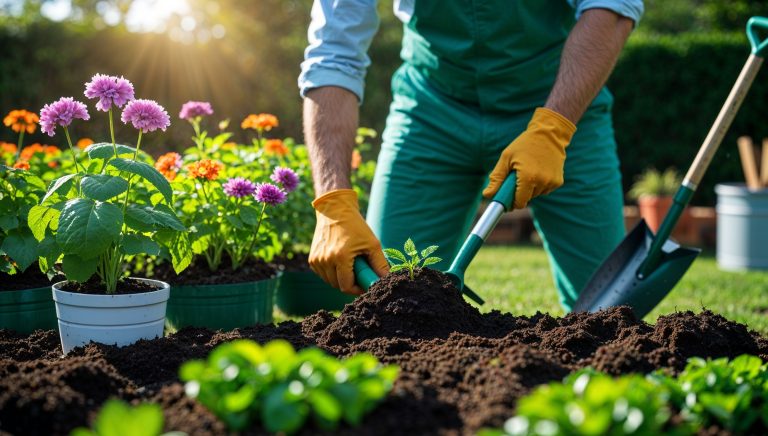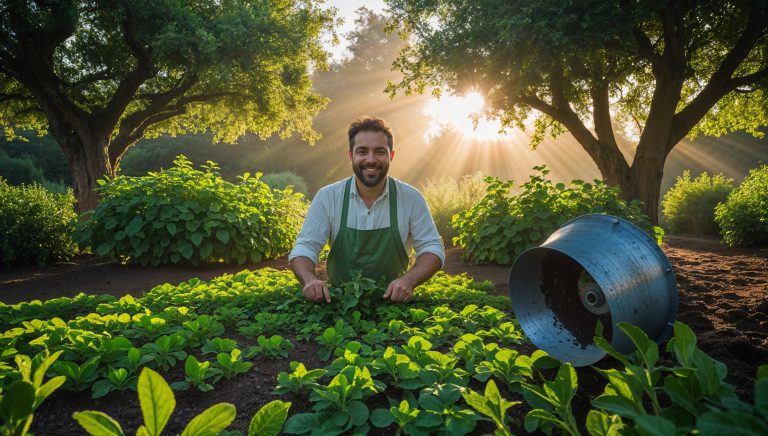

Growing your own herbs is one of the most rewarding gardening experiences. Whether you use them for cooking, crafting, or simply enjoying their fragrance, a herb garden at home can thrive with just a little care and attention. In this article, we’ll walk you through the steps to create a successful herb garden that will provide you with fresh herbs year-round.
The first step in creating a thriving herb garden is selecting the best location. Herbs require plenty of sunlight to grow well, so choosing the right spot is crucial.
Most herbs need at least 6 hours of direct sunlight each day to grow properly. A sunny windowsill, a balcony, or a sunny corner in your garden can be perfect spots for herbs. Herbs like basil, rosemary, thyme, and oregano thrive in full sun, while others like mint and parsley can tolerate partial shade. Choose a location based on the sunlight needs of the herbs you want to grow.
Herbs can be grown both in containers and directly in the ground. Container gardening is ideal for small spaces, like apartments or balconies, and allows you to move the plants around easily to follow the sun. On the other hand, planting herbs in the ground gives them more space to spread their roots and grow more robustly. Consider your space and needs when deciding the best option for you.
Once you’ve chosen the perfect spot, it’s time to prepare the soil for your herbs. Healthy, well-drained soil is essential for herbs to thrive.
Herbs prefer well-draining soil that’s rich in organic matter. If you’re planting in the ground, amend the soil with compost to improve its structure. You can also add sand or perlite to improve drainage. If you’re planting in containers, use a high-quality potting mix designed for herbs or vegetables to ensure proper drainage and nutrient levels.
Most herbs prefer slightly acidic to neutral soil, with a pH level between 6.0 and 7.0. If your soil is too acidic or too alkaline, you can adjust the pH by adding lime to raise the pH or sulfur to lower it. A simple soil test kit can help you determine the pH of your soil.
Choosing the right herbs for your garden is key to success. Some herbs are easier to grow than others, and it’s important to pick varieties that suit your gardening skills and the space you have available.
If you’re new to gardening, start with easy-to-grow herbs like basil, chives, mint, and rosemary. These herbs are hardy, require minimal care, and can be used in a variety of dishes. Basil is perfect for summer gardens and pairs wonderfully with tomatoes in salads or sauces. Chives grow quickly and are perfect for adding a mild onion flavor to dishes. Mint is versatile and can be used in teas, cocktails, and desserts.
If you have some gardening experience, you can try growing herbs like thyme, sage, and lavender. These herbs may require more attention to soil conditions and watering, but they reward you with strong, aromatic flavors. Lavender, in particular, is great for attracting pollinators like bees and butterflies to your garden.
Once you’ve selected your herbs and prepared your soil, it’s time to plant them. Follow these simple steps to ensure that your herbs grow strong and healthy.
Most herbs need to be planted at a depth roughly equal to the size of their root ball. Make sure to space them far enough apart to allow for growth. For example, basil and oregano need about 12 inches of space between each plant, while smaller herbs like thyme and parsley can be planted closer together.
After planting, give your herbs a deep watering to help settle the soil around the roots. Make sure the water reaches the root zone to encourage strong root growth. Be sure not to overwater, as herbs like basil and rosemary prefer slightly drier conditions.
Maintaining your herb garden is relatively simple but requires some regular attention. Here are some tips to keep your herbs thriving.
Herbs generally prefer soil that’s slightly dry between waterings. Water deeply once a week, or more often if the weather is particularly hot or dry. Make sure the soil is well-drained to avoid root rot. If you’re growing herbs in containers, check the drainage holes to make sure excess water can escape.
Most herbs do not require heavy fertilization, but a light feeding every few weeks will help keep them healthy. Use a balanced, all-purpose fertilizer or compost to provide the necessary nutrients. Avoid over-fertilizing, as this can result in excessive leaf growth with less flavor.
Prune your herbs regularly to encourage new growth and prevent them from becoming too leggy or woody. Remove any dead or damaged leaves to keep the plants looking neat and healthy. For herbs like basil, pinching off the flower buds will encourage the plant to produce more leaves. When harvesting, always cut the leaves or stems above a leaf node to promote further growth.
While herbs are generally hardy, pests can still be a problem. Here are some tips for keeping your herb garden free from pests.
If you notice pests like aphids or spider mites on your herbs, try using natural remedies such as neem oil or insecticidal soap. These treatments are gentle on the plants but effective at controlling pests. You can also attract beneficial insects like ladybugs and lacewings to your garden, which naturally feed on pests.
Mulching around your herbs can help prevent weeds and keep the soil moist. Mulch also acts as a barrier to pests, preventing them from getting to the plant’s base. Use organic mulch, such as straw or shredded leaves, to enrich the soil as it breaks down.
The best part about growing an herb garden is being able to use your fresh herbs in cooking, teas, and even home remedies. Take the time to enjoy the beauty and fragrance of your plants, whether you’re harvesting for dinner or simply relaxing in your herb-filled garden.